#commercial propane
Explore tagged Tumblr posts
Text

Timely and Safe Propane Delivery Services with Action Propane Inc
Action Propane Inc offers reliable home and commercial propane delivery services. Trust our expert team for safe, timely, and efficient propane solutions. For more information visit:- https://www.actionpropaneinc.com/
0 notes
Text
trigger of the day: haribo gummy bears
#haha i saw a commercial and now im knee deep in a flashback#and im still at work :)#and my fucking patient called me a bitch for not letting her play with a propane tank 🙄#like maam you dont know me but as much as i am a good caregiver/companion#i am also extremely antisocial and a massive bitch#so dont fucking test me.#ive work 36 hrs in 3 days#and i still have 8 more hours tomorrow#like dont. dont fucking push me#but i KNOW shes going to and im in an even worse mood now bc of the stupid fucking gummy bears#i hate ptsd i hate it its so fuckijng cringe
0 notes
Text
Air-Cooled Generators Market Analysis, Growth Factors and Dynamic Demand by 2032

The air-cooled generators market refers to the industry that deals with the production, sale, and distribution of generators that are cooled by air rather than liquid-based cooling systems. Air-cooled generators are commonly used in various applications where a reliable source of electrical power is required, such as residential, commercial, and industrial sectors.
The Air-Cooled Generators market is expected to grow annually by 13.7% CAGR rate (CAGR 2023 - 2030).
Key Features of Air-Cooled Generators:
Cooling Mechanism: Unlike liquid-cooled generators that use a coolant system, air-cooled generators utilize fans or blowers to dissipate heat generated during operation. This eliminates the need for a separate cooling system, making air-cooled generators more compact and portable.
Power Range: Air-cooled generators are available in a wide range of power capacities, from small portable units with a few kilowatts of power to larger standby generators with several hundred kilowatts. They are commonly used for backup power supply in residential settings and as auxiliary power sources in commercial and industrial applications.
Fuel Types: Air-cooled generators can be designed to run on different fuel types, including gasoline, diesel, natural gas, or propane. The choice of fuel depends on factors such as availability, cost, and specific application requirements.
Ease of Installation and Maintenance: Air-cooled generators are generally easier to install compared to liquid-cooled generators because they don't require complex plumbing or coolant systems. Maintenance is also relatively simpler, involving tasks such as regular filter cleaning and oil changes.
Noise Levels: Air-cooled generators tend to be louder during operation compared to their liquid-cooled counterparts. However, advancements in generator design and acoustic insulation have helped reduce noise levels in modern air-cooled models.
Market Trends and Growth Drivers:
The air-cooled generators market has experienced steady growth in recent years due to several factors:
Increasing Demand for Backup Power: With growing concerns about power outages and the need for uninterrupted electricity supply, there is a rising demand for backup power solutions. Air-cooled generators provide a cost-effective and convenient option for homeowners, small businesses, and other applications that require standby power.
Portable Power Needs: Air-cooled generators are highly portable and suitable for applications such as camping, outdoor events, construction sites, and recreational vehicles. The popularity of outdoor activities and the need for mobile power sources have contributed to the market's expansion.
Advancements in Technology: Manufacturers are continuously improving air-cooled generator technology to enhance performance, fuel efficiency, and reduce emissions. These advancements, coupled with the increasing availability of smart features and remote monitoring capabilities, have made air-cooled generators more appealing to consumers.
Growing Construction and Industrial Sectors: The construction industry and various industrial sectors require reliable power sources to support their operations. Air-cooled generators offer a convenient and cost-effective solution, leading to increased adoption in these sectors.
We recommend referring our Stringent datalytics firm, industry publications, and websites that specialize in providing market reports. These sources often offer comprehensive analysis, market trends, growth forecasts, competitive landscape, and other valuable insights into this market.
By visiting our website or contacting us directly, you can explore the availability of specific reports related to this market. These reports often require a purchase or subscription, but we provide comprehensive and in-depth information that can be valuable for businesses, investors, and individuals interested in this market.
“Remember to look for recent reports to ensure you have the most current and relevant information.”
Click Here, To Get Free Sample Report: https://stringentdatalytics.com/sample-request/air-cooled-generators-market/2754/
Market Segmentations:
Global Air-Cooled Generators Market: By Company • GE • Siemens • ANDRITZ • Ansaldo Energia • Brush • Shanghai Electric • Mitsubishi Hitachi Power Systems • Toshiba • Harbin Electric • Bzd • WEG • Power-M • BHEL • Fuji Electric Global Air-Cooled Generators Market: By Type • 2-Pole Air-Cooled Generators • 4-Pole Air-Cooled Generators Global Air-Cooled Generators Market: By Application • Gas Turbine Power Plant • Steam Turbine Power Plant • Others Global Air-Cooled Generators Market: Regional Analysis All the regional segmentation has been studied based on recent and future trends, and the market is forecasted throughout the prediction period. The countries covered in the regional analysis of the Global Air-Cooled Generators market report are U.S., Canada, and Mexico in North America, Germany, France, U.K., Russia, Italy, Spain, Turkey, Netherlands, Switzerland, Belgium, and Rest of Europe in Europe, Singapore, Malaysia, Australia, Thailand, Indonesia, Philippines, China, Japan, India, South Korea, Rest of Asia-Pacific (APAC) in the Asia-Pacific (APAC), Saudi Arabia, U.A.E, South Africa, Egypt, Israel, Rest of Middle East and Africa (MEA) as a part of Middle East and Africa (MEA), and Argentina, Brazil, and Rest of South America as part of South America.
Visit Report Page for More Details: https://stringentdatalytics.com/reports/air-cooled-generators-market/2754/
Reasons to Purchase Air-Cooled Generators Market Report:
• To obtain insights into industry trends and dynamics, including market size, growth rates, and important factors and difficulties. This study offers insightful information on these topics.
• To identify important participants and rivals: This research studies can assist companies in identifying key participants and rivals in their sector, along with their market share, business plans, and strengths and weaknesses.
• To comprehend consumer behaviour: these research studies can offer insightful information about customer behaviour, including preferences, spending patterns, and demographics.
• To assess market opportunities: These research studies can aid companies in assessing market chances, such as prospective new goods or services, fresh markets, and new trends.
• To make well-informed business decisions: These research reports give companies data-driven insights that they may use to plan their strategy, develop new products, and devise marketing and advertising plans.
In general, market research studies offer companies and organisations useful data that can aid in making decisions and maintaining competitiveness in their industry. They can offer a strong basis for decision-making, strategy formulation, and company planning.
Click Here, To Buy Premium Report: https://stringentdatalytics.com/purchase/air-cooled-generators-market/2754/?license=single
About US:
Stringent Datalytics offers both custom and syndicated market research reports. Custom market research reports are tailored to a specific client's needs and requirements. These reports provide unique insights into a particular industry or market segment and can help businesses make informed decisions about their strategies and operations.
Syndicated market research reports, on the other hand, are pre-existing reports that are available for purchase by multiple clients. These reports are often produced on a regular basis, such as annually or quarterly, and cover a broad range of industries and market segments. Syndicated reports provide clients with insights into industry trends, market sizes, and competitive landscapes. By offering both custom and syndicated reports, Stringent Datalytics can provide clients with a range of market research solutions that can be customized to their specific needs
Contact US:
Stringent Datalytics
Contact No - +1 346 666 6655
Email Id - [email protected]
Web - https://stringentdatalytics.com/
#Air-cooled generators#Power generation#Standby generators#Backup power#Portable generators#Residential generators#Commercial generators#Industrial generators#Emergency power#Diesel generators#Gas generators#Propane generators#Generator set#Generator market#Generator industry#Power equipment#Generator manufacturers#Generator suppliers#Generator technology#Generator maintenance#Generator installation#Generator capacity#Generator efficiency#Generator reliability.
0 notes
Text
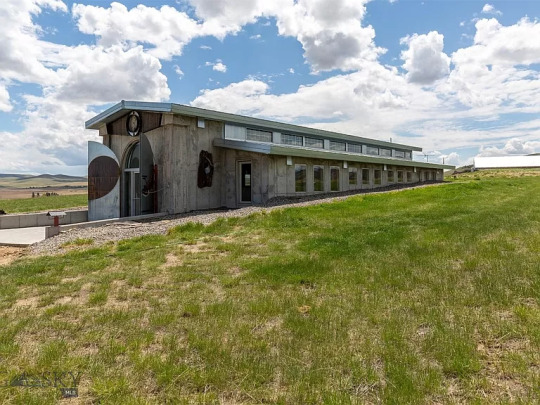
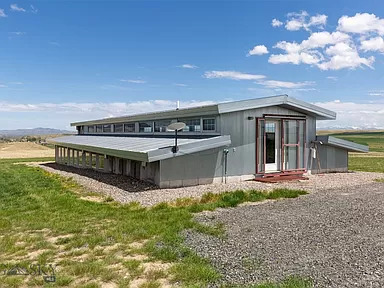

Even though it's constructed of thick concrete-insulated walls, built into the hillside, concrete floors, steel I beams, and custom made steel doors, it still has lots of glass and is above ground, so how can it be an apocalypse house? Built in 2004 in Willow Creek, Montana, it has 1bd (screw everyone else), 2ba, $850K.
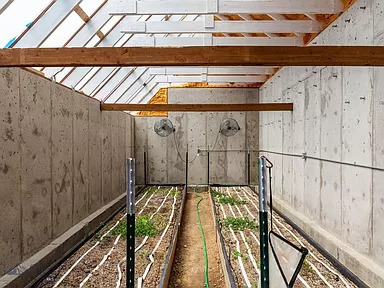
Greenhouse has a glass ceiling and contamination can creep into the soil.

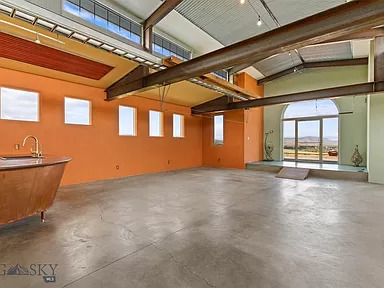
I just don't get this house.


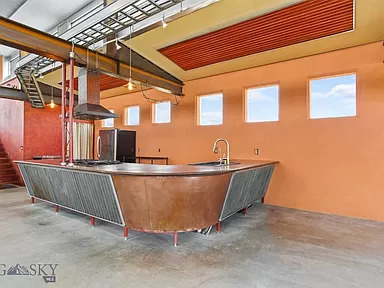
Huge living room/kitchen space. This structure in the corner is the kitchen.

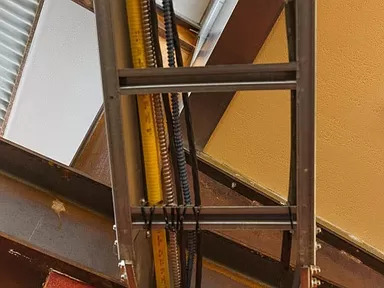
Not sure what this is above the kitchen.
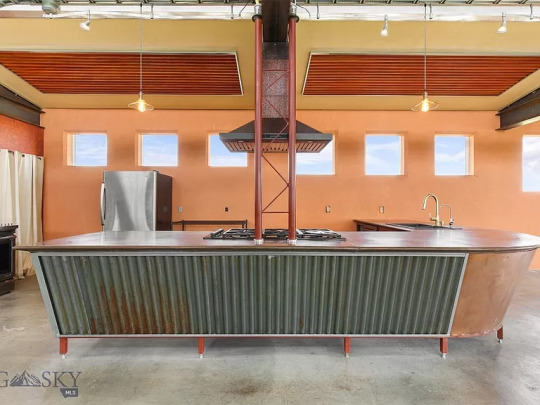

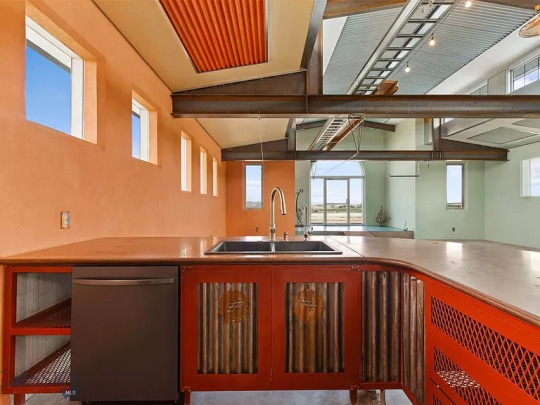
Behind the kitchen counter. This is seriously industrial.
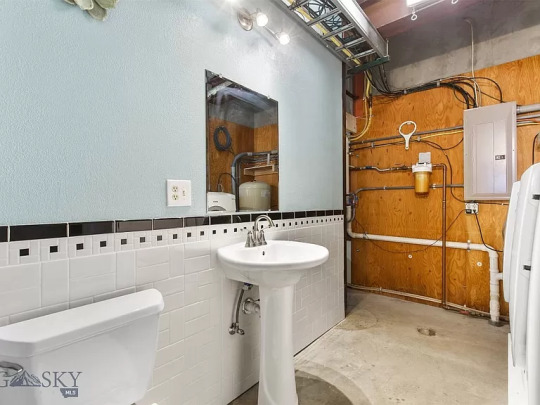


Combination bath/utility room.
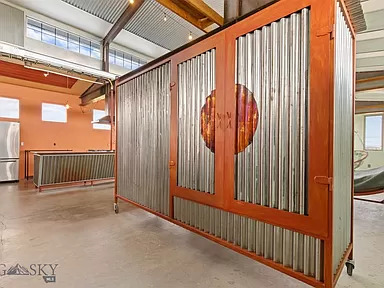
Storage cabinet on wheels acts as a divider between the bedroom and living area.
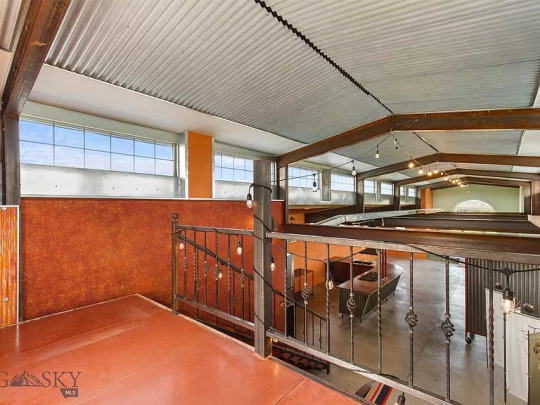

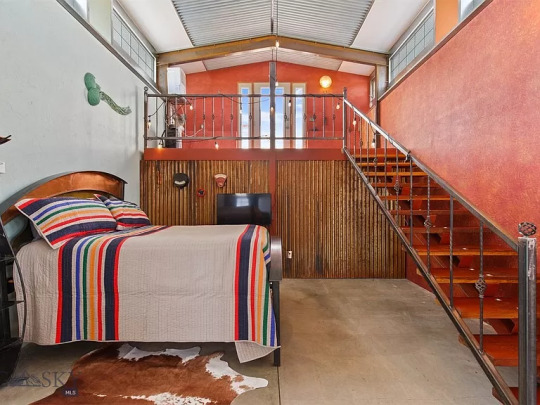
A rear entrance has a small lofted area and goes down to the bedroom.

Entrance to bath #2 is behind the screen.

Industrial style farm doors.


The 2nd bath is a shower room.
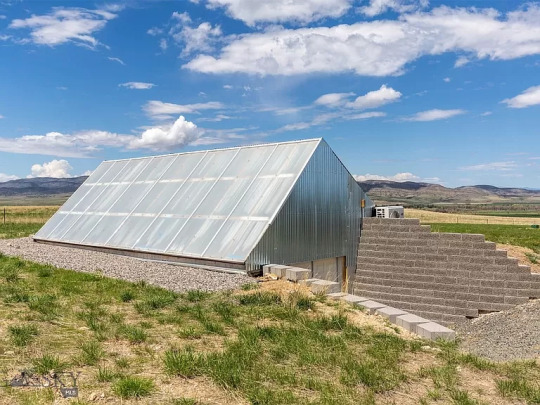
I don't know what this building is, but it's partially underground.
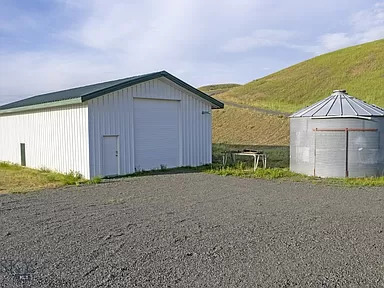

40x60 shop on the property has a separate 500-gallon propane tank.

The grain silo is an art studio that comes equipped with 2 kilns.
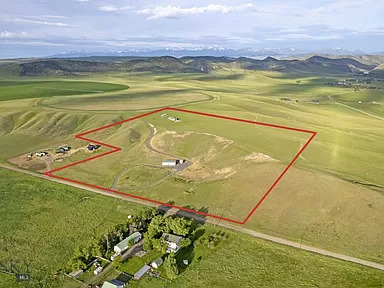
27.87 acres. There are no restrictive covenants or zoning, so you have the freedom for multiple uses including, but not limited to, commercial, industrial, recreational, agricultural, small business, residential, and farming.
95 notes
·
View notes
Text
Excerpt from this story from Inside Climate News:
In recent years, gas stoves have been an unlikely front in the nation’s culture wars, occupying space at the center of a debate over public health, consumer protection and the commercial interests of manufacturers. Now, Norton is among the environmental advocates who wonder if a pair of recent developments around the public’s understanding of the harms of gas stoves might be the start of a broader shift to expand the use of electrical ranges.
On Monday, lawmakers in the California Assembly advanced a bill that would require any gas stoves sold in the state to bear a warning label indicating that stoves and ovens in use “can release nitrogen dioxide, carbon monoxide, and benzene inside homes at rates that lead to concentrations exceeding the standards of the Office of Environmental Health Hazard Assessment and the United States Environmental Protection Agency for outdoor air quality.”
The label would also note that breathing those pollutants “can exacerbate preexisting respiratory illnesses and increase the risk of developing leukemia and asthma, especially in children. To help reduce the risk of breathing harmful gases, allow ventilation in the area and turn on a vent hood when gas-powered stoves and ranges are in use.”
The measure, which moved the state Senate, could be considered for passage later this year.
“Just running a stove for a few minutes with poor ventilation can lead to indoor concentrations of nitrogen dioxide that exceed the EPA’s air standard for outdoors,” Gail Pellerin, the California assembly member who introduced the bill, said in an interview Wednesday. “You’re sitting there in the house drinking a glass of wine, making dinner, and you’re just inhaling a toxic level of these gases. So, we need a label to make sure people are informed.”
Pellerin’s proposal moved forward in the legislature just days after a group of Stanford researchers announced the findings of a peer-reviewed study that builds on earlier examinations of the public health toll of exposure to nitrogen dioxide pollution from gas and propane stoves.
35 notes
·
View notes
Text
Recent events in the State of Washington pit environmentalists against the voting public.
Doomberg
Nov 13, 2024
“Don't pay any attention to the critics—don't even ignore them.” – Samuel Goldwyn
By nearly all the measures that matter, the State of Washington’s energy mix is about as green as it gets. Leveraging the powerful flows of the Columbia River, Washington generates approximately 60% of its electricity from hydroelectric dams. The Grand Coulee Dam is by far the largest hydroelectricity producer in the US and ranks among the top ten globally, generating more than 20 billion kilowatt hours (kWh) per year. The state is also home to the Northwest’s only commercial nuclear energy facility—the Columbia Generating Station—which provides a further 8% of annual supply to the grid, about as much as is currently delivered by wind turbines. The balance of Washington’s generation comes from clean-burning natural gas, and the last of its large coal furnaces is set to close in 2025. Set it and forget it | Getty
A similar story emerges when analyzing how residents in Washington heat their homes. More than 58% use electricity, and state leaders are actively pushing heat pumps as a replacement for traditional resistive heating options. Only a third of households rely on natural gas, while the remaining 9% rely on a mix of propane, wood, and other sources.
Although Washington produces almost no oil or natural gas within its borders, it has positioned itself shrewdly in both markets. The state is home to five refineries, ranks fifth in the US by total refining capacity, and is a net exporter of petroleum products. Washington is also a major conduit of natural gas produced in British Columbia and Alberta, home to some of the lowest-cost supply in the world. The Gas Transmission Northwest pipeline is capable of flowing 2.7 billion cubic feet per day (bcf/d) as it passes into the state from Idaho on its way to Oregon. The Northwest Pipeline has a peak capacity of 3.8 bcf/d and enters Washington in Sumas, southeast of Vancouver, facilitating gas supply for Oregon, Idaho, Wyoming, Utah, and Colorado.
5 notes
·
View notes
Text
How to Choose a Fire Pit: The Best Fire Pit

Table of Content
Size
How to Choose a Fire Pit: Choose The Best Materials For Your Fire Pit
Final Words
FAQ
Even during the cold season, a simple fire pit allows you to enjoy outdoor living from the warmth of your backyard. A gorgeous fire pit may be the feature of your backyard, whether you wish to experiment with interesting architectural design ideas or create an outdoor fireplace for social gatherings. Here are some specialties to think about How to Choose a Fire Pit.
How to Choose a Fire Pit: What to Think
When choosing a fire pit, there’s more to think about than whether to purchase from Lowe’s or Amazon. To mention a few considerations, the size of the unit, the amount of heat you want, and the sort of fuel you choose are all important. Consider mobility, maintenance, and warranty as well.
Cost
A contemporary fire pit may cost between $1,500 and $10,000. The fire pit’s size, material, and characteristics determine the cost. For example, a modest painted metal fire pit should be on the low end of that price range, but a huge stone fire pit with built-in seating may cost several thousand dollars.
Fuel Type
Your fire pit may run on various fuels, including wood, propane, or natural gas. Although natural gas and propane are typically safer than firewood, a wood fire is a timeless classic. Nothing compares to the crackles and pops of a real-wood fire or the smokey fragrance of the ashes. A gas fire pit is safe, clean, and simple to switch on and off. Because gas and propane are both fossil fuels, their costs will almost certainly rise. The cost of wood is mainly determined by where you live and how easily you can get firewood. Although a nuisance, firewood is conveniently available. Propane is easy, clean, and safe for the environment. Because of its higher cost, natural gas is a less common option.
Local Laws
Before looking for a fire pit, understand the local rules governing open flames. Inquire with your city or county office about fire pit laws. They will be able to inform you what size and kind of fire pits are permitted, as well as any other limitations. Your homeowner’s association may also govern the usage of fire pits. It’s best to be safe than sorry, so read up on the rules before making any purchases.
Material
Most commercially available fire pits are made of one of three materials: steel, copper, or cast iron. To build your fire pit, you may use brick, slate, native stone, or any heat-resistant material.
If you choose steel, you will obtain a lightweight, weather-resistant product at a reasonable price. Cast iron, on the other hand, is a denser, thicker metal than steel and retains heat for extended periods. This material also lasts longer than steel and is available in more creative patterns.
Copper has a warm, beautiful look and lasts practically indefinitely. On the other hand, your copper fire pit must be polished, or it will get black.
Portability
A portable fire pit is ideal if you want to relocate it or bring it with you when you travel. Portable fire pits are often less costly than permanent fire pits and are simple to put up and dismantle. On the other hand, portable fire pits may be less sturdy and may not survive as long as permanent fire pits.
Size
The proper size fire pit for you is determined by the size of your outside area and the number of the person you wish to accommodate. If you have a large outdoor area, go for a larger fire pit so that more people can enjoy the warmth of the fire.
Small fire pits are typically 3 feet broad at their widest points, whereas giant fire pits are 6 feet wide. You’ll need a petite 3 feet of room around a circular fire pit to seat many people—6 feet if you want to entertain a bigger gathering.
Style
There are various types of fire pits. You may choose piled stone for a more traditional aesthetic or something more rustic, such as an outdoor barbecue. A copper grill is a good investment if you enjoy the rugged outdoor vibe.
How to Choose a Fire Pit: Choose The Best Materials For Your Fire Pit
Aluminum
Aluminum is one of the most valuable materials for making fire pit tables. It doesn’t rust and is strong. It can also be made into numerous shapes and finished in many different ways. Most aluminum outdoor furniture is constructed of cast aluminum or extruded metal.
Cast Aluminum
Casting is created by pouring molten metal into a mold. The parts of the furniture are each cast separately. Once the aluminum has hardened and cooled, the parts are taken out of the mold and sanded before being put together with welds and bolts.
Extruded Aluminum
Solid aluminum is pushed through a die to make a tube, then used to make extruded aluminum furniture. The extruded aluminum is then shaped into furniture parts like legs, arms, and tabletops. These parts are then put together to make finished furniture.
HDPE
Polywood gas fire pits are built of recycled high-density polyethylene (HDPE). HDPE is a strong type of plastic often used to make milk jugs and bottles for laundry detergent.
Steel
Heavy gauge steel is used to make good wood-burning fire pits. It is strong, lasts long, and doesn’t rust or corrode. When looking for a wood-burning fire pit, think about how thick the steel is and how heavy the unit is. Also, look for a 20-year or even a lifetime warranty.
What kinds of wood are best for your fire pit?
Ash
This is one of the most valuable techniques to keep a fire blazing for an extended period. Ash is simple to locate and inexpensive to purchase. It takes longer to warm up, but once it does, it produces a lot of heat on chilly nights.
Beech
The best wood for a fire is beech. It has a high density, and when it’s seasoned, it burns hot and smells good.
Cherry
Hite suggests cherry if you want to set a mood without keeping the fire going for hours before your guests arrive. It claims it will ignite rapidly, enabling you to spend less time making it and more time enjoying it.
Maple
This popular choice is thick and will burn for a long time. It’s a great wood to cook with because it gives food more flavor.
Oak
This popular wood is easy to find all over the country. It burns slowly and doesn’t make much smoke. It’s easy to break apart, but it can take years to dry out completely.
Pine
Pine is a great choice to set the mood with a cheap wood that won’t break the bank. It is easy to break, and the crackling sound it makes when burned adds to the atmosphere.
How to Choose a Fire Pit: Advantages of Wood Fire Pits
Wood fire pits often provide more heat than gas fire pits, making them ideal for grilling hot dogs or preparing s’mores with the family.
Compared to natural gas or propane, firewood is often a less expensive and more immediately accessible fuel source. For many, it may be as simple as going to a nearby gas station or firewood dealer.
Temperatures in the Northeast may fluctuate dramatically during the night. Because wood fire pits provide more heat, they are ideal for late-night fires.
If you’re seeking a winter pastime, wood fire pits make it easy to have a winter fire in your backyard, giving heat without the need to connect gas lines or propane tanks. Consider a wood fire pit for your room if you want a classic heating solution with a beautiful ambiance.
How to Choose a Fire Pit: Advantages of Gas Fire Pits
Natural or propane gas fire pits and tables provide the simplicity and safety that every outdoor living area need.
Gas fire pits provide a viable outdoor heating solution that does not need the use of wood. Avoid flying sparks and smoke, which may irritate allergy sufferers.
Gas fire pits and tables are simple to light and provide temperature control, allowing you to prolong your outdoor season.
Owners may adjust the temperature of the flame to create a pleasant environment.
When the weather changes, lower the temperature for mild summer evenings or raise it to create significant heat. This modification, regardless of temperature change, may assist in guaranteeing visitors to stay comfortable.
Those who choose propane will have even more choices. A propane fire pit requires the connection of a gas tank for installation, making it portable so that you may quickly change the living area.
Unlike propane, natural gas necessitates the installation of a permanent gas line on the land to establish a permanent fire feature.
Natural gas also means less time refilling propane tanks, and the fuel source allows for a more significant fire.
How to Choose a Fire Pit: Gas or Wood-Burning Fire Pits?
Gas fire pits are likely to provide more advantages than their conventional equivalent.
However, some individuals prefer wood-burning fire pits because of their fragrance, aura, and associations with nostalgia; many even love constructing the fire from the start.
Others prefer gas-burning fire pits and fireplaces for ease of use; turn a valve, ignite the fire, and position it as desired depending on temperature and light requirements.
In addition to their convenience, gas fire pits are a clean-burning and ecologically sustainable solution with fewer fire threats.
The convenience of temperature control and rapid illumination may not compensate for the extra costs associated with fuel and total appliance installation. However, like most things in your house, it comes down to personal taste, depending on your wants and objectives.
Final Words
We hope to have cleared up enough of the mystery surrounding the crowded sleeping pad market to help you search for the ideal product. Fortunately, there are several types to pick from, and one will undoubtedly suit your requirements. This article, “How to Choose a Fire Pit,” will help you find an ideal one.
FAQ
What is the most secure sort of fire pit?
A gas-powered fire pit is your best chance for a secure fire pit. These fire pits are powered by natural gas or propane and emit very little smoke. That means your clothing and hair are less likely to catch fire, and you won’t have to worry about inhaling dangerous fumes.
What kind of fire pit produces the greatest heat?
Because they contain the biggest flames, wood-burning fire pits often emit the most heat. Build these fire features low to the ground with side apertures. Wood is the greatest choice for outdoor culinary experiments, such as toasting marshmallows.
Is it preferable to have a square or circular fire pit?
In terms of area, square fire pits are the more efficient alternative, making them ideal for tiny yards and patios. Seating arrangements are much easier around a square fire pit, whether you choose permanent or portable patio furniture.
5 notes
·
View notes
Text
Sunday, October 6, 2024
When will the power return? Weary Carolinas residents long for relief (AP) The weary and worn residents of Julianne Johnson’s neighborhood in Asheville have been getting by without electricity since Hurricane Helene tore through the Southeast last week and upended their lives. They’ve been cooking on propane stoves and using dry erase boards to keep up with local happenings while wondering when the lights would come back on. Johnson, who has a 5-year-old son and works for a land conservation group, received a text from Duke Energy promising her power would be restored by Friday night. But as of midday, utility poles and wires were still draped at odd angles across the streets, pulled down by mangled trees. “I have no idea what’s next,” said Johnson, whose family does have some power thanks to a generator. “Just the breadth of this over the whole region, it’s kind of amazing.” Nearly 700,000 homes and businesses—mostly in the Carolinas and Georgia—were still without electricity Friday, according to poweroutage.us. That’s an improvement over the more than 2 million customers without power five days ago.
Tropical Storm Milton forms in the Gulf of Mexico, expected to make landfall in Florida this week (Yahoo News) Tropical Storm Milton formed in the Gulf of Mexico on Saturday and is forecast to bring “life-threatening impacts” to Florida—a state just ravaged by Hurricane Helene—next week. In its latest advisory, National Hurricane Center (NHC) meteorologists warned the forecast shows the system nearing near “major hurricane strength” when it makes landfall along Florida’s west coast. “An intense hurricane with multiple life-threatening hazards is likely to affect the west coast of the Florida Peninsula next week,” the advisory stated.
A Pentagon Debate: Are U.S. Deployments Containing the Fighting, or Inflaming It? (NYT) As the Israeli offensive in Lebanon expands to include ground incursions and intensifying airstrikes, senior Pentagon officials are discussing whether the enhanced U.S. military presence in the region is containing a widening war, as they had hoped, or inflaming it. In the 12 months since Hamas attacked Israel, launching a conflict that includes Yemen, Iran and Lebanon, the Pentagon has sent a bristling array of weaponry to the region, including aircraft carriers, guided missile destroyers, amphibious assault ships and fighter squadrons. The Pentagon announced this week that it would add a “few thousand” more troops to the equation and essentially doubled its air power in the region. President Biden says the U.S. hardware and extra troops are there to help defend Israel and to protect other American troops on bases throughout the region. But several Pentagon officials expressed concern that Israel was waging an increasingly aggressive campaign against the Lebanese militia Hezbollah, Iran’s most powerful proxy, knowing that an armada of American warships and dozens of attack planes stand ready to help blunt any Iranian response.
Supreme Court will weigh Mexico’s $10 billion lawsuit against U.S. gun makers (AP) The Supreme Court said Friday it will decide whether to block a $10 billion lawsuit Mexico filed against leading U.S. gun manufacturers over allegations their commercial practices have helped caused much bloodshed there. The gun makers asked the justices to undo an appeals court ruling that allowed the lawsuit to go forward despite broad legal protections for the firearm industry. A federal judge has since tossed out the bulk of the lawsuit on other legal grounds, but Mexico could appeal that dismissal. Mexico argues the companies knew weapons were being sold to traffickers who smuggled them into Mexico and decided to cash in on that market. The government estimates 70% of the weapons trafficked into Mexico come from the United States.
Brazil’s Largest Mafia Is Entering Politics (NYT) The city of São Paulo, Brazil, is about to elect its next mayor, but the talk of the town is about a party that’s not on the ballot on Sunday: The “party of crime,” or as it’s formally known, the First Capital Command (P.C.C.). Police officials recently claimed that the criminal group moved almost $1.5 billion through fintech companies, using some funds to finance candidates around São Paulo State. And one of the front-runners for São Paulo mayor, the far-right fitness coach and influencer Pablo Marçal, is running under a small political party whose president was caught on tape bragging about his P.C.C. ties earlier this year. (The party president has denied the audio is of him, but reporters from the newspaper Folha de S. Paulo say they confirmed its authenticity with six independent sources.) While organized crime has long played a substantial role in local politics in countries such as Colombia and Mexico, this was not as much the case in Brazil until recently. Now Brazil faces a reckoning: Curb the criminal organization’s power or watch its influence grow. Once organized crime money floods into politics and the private sector—as it did in 1980s Colombia and in Mexico in the decades since—it’s difficult to reverse. It can make politicians more beholden to mafias than voters, judges more responsive to crime bosses than their victims and firms allied with crime more profitable than their rule-abiding rivals.
Floods inundate Thailand’s northern tourist city of Chiang Mai (AP) Chiang Mai, Thailand’s northern city popular with tourists, was inundated by widespread flooding Saturday as its main river overflowed its banks following heavy seasonal rainfall. Authorities ordered some evacuations and said they were working to pump water out of residential areas and clear obstructions from waterways and drains to help water recede faster. Dozens of shelters were set up across the city to accommodate residents whose home were flooded. The Chiang Mai city government said the water level of the Ping River, which runs along the eastern edge of the city, was at critically high levels and was rising since Friday.
One year in, war casts a shadow over every aspect of life in Israel (AP) At a busy Tel Aviv entertainment district, diners spill into outdoor seating and clink glasses as music fills the air. There’s laughter, there’s life. But all around the patrons, staring down from lampposts and shop windows, are pictures of hostages held in Gaza, stark reminders that Israel is at war and forever scarred by the deadliest attack in its history. As Israel’s war with Hamas reaches its one-year mark, it can seem on the surface that much of life in the country has returned to normal. But with many still reeling from Hamas’ Oct. 7 attack, hostages remaining in captivity and a new front of war with Hezbollah in the north, many Israelis feel depressed, despondent and angry as the war stretches into its second year. Uncertainty over the future has cast a pall over virtually every part of daily life, even as people try to maintain a sense of normalcy.
Israeli airstrikes rock southern suburbs of Beirut and cut off a key crossing into Syria (AP) Israel carried out another series of punishing airstrikes Friday, hitting suburban Beirut and cutting off the main border crossing between Lebanon and Syria for tens of thousands of people fleeing the Israeli bombardment of the Hezbollah militant group. The overnight blasts in Beirut’s southern suburbs sent huge plumes of smoke and flames into the night sky and shook buildings kilometers (miles) away in the Lebanese capital. Additional strikes sent people running for cover in streets littered with rubble in the Dahiyeh neighborhood, where at least one building was leveled and cars were burned out. Lebanon’s state-run National News Agency reported more than 10 consecutive airstrikes in the area. Some 1,400 Lebanese, including Hezbollah fighters and civilians, have been killed and some 1.2 million driven from their homes since Israel escalated its strikes in late September aiming to cripple Hezbollah and push it away from the countries’ shared border.
Lebanon's Christian cities become havens (NZZ/Switzerland) Even several days after the death of Hezbollah leader Hassan Nasrallah, an all-important figure in Lebanese politics, the country seems paralyzed by fear. Christians are worried that they will once again come under attack. Most of them did not want this war. Now they have to watch powerlessly as their country goes under. This is particularly noticeable in Zahle. The city on the eastern edge of the Lebanon Mountains is considered the last outpost of Lebanese Christianity. The flat landscape beyond is mostly home to alternating Shiite and Sunni villages. “Zahle has always been on its own,” says Assad Zogaib, the city's mayor, while he sits on the second floor of a palatial building and smokes a thick cigar. Because of their exposed location, the residents have developed a special sense of community: “We look after our own affairs. There is cleanliness and order in our city.” Zahle is indeed a sparkling clean city—in stark contrast to the poor, rundown villages in the nearby Bekaa. There's a Dunkin' Donuts, freshly paved roads, neatly trimmed trees, and cafes where people can sit on the banks of a bubbling mountain stream. In addition, Zahle is the only city in economically devastated Lebanon that produces its own electricity and almost always has power. It is also the temporary home of around 15,000 desperate refugees from other parts of Lebanon. Neither East Beirut nor the mountains north of it—where the heartland of Lebanon's mostly Maronite Christians lies—or Zahle have been the targets of bombs so far. Instead, these areas are becoming a place of refuge for the now one million displaced people.
Relatives say a whole family was killed in Israel’s deadliest West Bank strike since Oct. 7 (AP) An Israeli airstrike on a West Bank cafe that the military said targeted Palestinian militants also killed a family of four, including two young children, relatives told The Associated Press on Friday. The strike slammed into a three-story building in the Tulkarem refugee camp late Thursday, setting it on fire, destroying a popular cafe and killing at least 18 Palestinians, according to the territory’s Health Ministry. It was the deadliest strike in the West Bank since the start of the Israel-Hamas war nearly a year ago. On Friday, paramedics searched the rubble inside the blasted-out coffee shop, gathering human remains into small boxes. Among the dead was the Abu Zahra family: Muhammad, a bakery worker; his wife, Saja; and their two children, Sham, 8, and Karam, 6, according to the man’s brother, Mustafa Abu Zahra, who said the family lived above the coffee shop. He added that one of Muhammad’s brothers-in-law was also in the apartment at the time and was killed.
Solar power companies are growing fast in Africa, where 600 million still lack electricity (AP) Companies that bring solar power to some of the poorest homes in Central and West Africa are said to be among the fastest growing on a continent whose governments have long struggled to address some of the world’s worst infrastructure. The often African-owned companies operate in areas where the vast majority of people live disconnected from the electricity grid, and offer products ranging from solar-powered lamps that allow children to study at night to elaborate home systems that power kitchen appliances and plasma televisions. Central and West Africa have some of the world’s lowest electrification rates. In West Africa, where 220 million people live without power, this is as low as 8%, according to the World Bank. Many rely on expensive kerosene and other fuels that fill homes and businesses with fumes and risk causing fires.
2 notes
·
View notes
Text
AI Reaches Trail . . . Has Big Tech Gone Too Far
By Adam Roy, Backpacker Magazine
Google has figured out that I like to hike. I’m not sure what tipped it off—could it be the roughly 40 hours per workweek I spend editing and fact-checking stories about hiking, or maybe the nights and weekends I pass searching for trailheads and obsessively checking and rechecking the weather forecast. Whatever the reason, whenever I log on I get served up a stream of gear promotions and tourism spots for outdoor destinations. But about a week ago, I saw an ad for Google’s Pixel 8 smartphone and its onboard Gemini artificial intelligence that stopped me in my tracks.
The ad goes like this: A dad is trying to set up a tent in a campsite. The dad is floundering, tangled up in guylines and collapsing nylon, when he turns around and notices his son has stopped collecting firewood and is watching him with dismay, probably thinking about how much better his stepdad is at camping. Then the dad pulls out his phone, snaps a picture of the tent, and feeds it into Gemini, which returns a numbered list of instructions for him. Smash cut to the now-content kid and father enjoying their perfectly-pitched shelter.
youtube
My first reaction to the ad: I’ve been there. Whether by neglecting hot spots until they bloomed into blisters, leaving a vent open in a snowstorm, or spending an hour struggling to coax a flame out of a pile of damp wood, I know what it’s like to struggle on a camping or backpacking trip in front of other people. The desire to avoid that struggle and the embarrassment that comes with it is a pretty powerful motivator.
My second thought: This is going to get someone into so, so much trouble.
Google and other Big Tech AI firms like OpenAI, Meta, and X want to see their technology everywhere. Using it to filter restaurant results is one thing, but pushing artificial intelligence as a substitute for basic outdoor skills comes with real risks. Let’s start with the fact that Google’s AI arguably still isn’t up to the task of keeping people safe in the outdoors: We’re barely a month out from Gemini telling searchers to eat glue and cook spaghetti in gasoline. Although those errors didn’t do any damage besides embarrassing a handful of highly paid software engineers, it’s not hard to imagine AI trained on the unfiltered whole of the internet telling a new camper it’s safe to run a propane heater inside their tent or eat a poisonous mushroom.
(That’s assuming, of course, that the AI is even capable of giving actionable information: Zoom in on the simulated advice Gemini offers in the commercial and you’ll notice that step 4 is “Assemble the tent poles according to the manufacturer’s instructions.” Apparently Google Dad, like so many dads before him, just needed someone to remind him to read the manual.)
You Still Have To Use Your Brain
Yes, ideally AI users would be cautious consumers, sniffing out bad or obviously dangerous information before acting on it. But we already have real-life examples of people over-relying on much less intrusive technology with disastrous results. Take another popular Google product, Google Maps, for example. There were the hikers who needed rescue after following an imaginary trail in Maps up the side of a mountain in British Columbia, and the German tourists who had to trek two days through the Australian bush after a similar error stranded them and their car on a remote dirt track. The company is currently fighting a lawsuit from the family of a man who followed its GPS directions off of a collapsed bridge.
In Colorado, tow companies make a killing every year dragging stranded motorists off of mountain 4×4 tracks after app-assisted “shortcuts.” The plug-and-play, let-us-think-for-you, don’t-bother-checking-the-sources tone of Google and other corporations’ marketing of their artificial intelligence only makes incidents like these more likely.
My bigger objections to AI-directed camping, though, may be philosophical. Whether you learn from a friend or an expert online, there’s something wonderful about becoming competent in the outdoors. It’s a long, awkward, and sometimes uncomfortable process. But it’s joyful too, fostering self-confidence and a deeper sense of connection with your environment. Mediating that through a robot assistant strikes me as a quick way to dilute that, ensuring that you neither learn any real outdoor skills nor unplug in any meaningful way.
Other tech firms’ AI-powered takes on the outdoors are equally baffling. An ad released by Meta last month starts with one friend in a group chat enticing the others to camp by sharing an AI-generated image of someone cowboy camping next to an unattended campfire, a fully set-up tent with only a lantern inside of it, and, inexplicably, a folding table with what looks like either several copper pots or maybe a moonshiner’s still on it. Setting aside the safety issues, I can’t help but wonder what kind of person finds more inspiration to get outside in a fake-ass AI-generated image than in the hundreds of thousands of real outdoor photos plastered across the internet.
We Can Still Embrace Technology
I’m not a Luddite. I plan every trip I take on Gaia, Outside’s mapping app, and I listen to podcasts on long solo hikes. Backpacker and Outside’s other titles feature Scout, an AI search engine we trained on our own work in order to help readers more easily find the human-written information they’re looking for; we’ve even experimented with letting Scout choose a hike for us. I also recognize I’m not unbiased: My fellow Backpacker editors, writers, and I make our living creating carefully researched guides and stories for people who love the outdoors. Seeing Google redigest those into AI pablum just so it can make ad money off the backs of the real-life hikers doing the real-life work is frustrating.
Ultimately, the outdoors should be for everyone, and how you choose to get outside is up to you. If that means asking Google or Meta’s AI to walk you through it, so be it. But think about what you want to get out of your time in the woods: There are some things in life that are better without Big Tech breathing down your neck. If you want to polish your outdoor skills, there’s a whole constellation of people who will help you without harvesting all of your personal data, from your more experienced friends to local trail clubs to, yes, even the human experts here at Backpacker. And if you’re ever struggling to set up your tent, a free tip: Start by reading the instructions, and practice before your kid is watching.
2 notes
·
View notes
Text
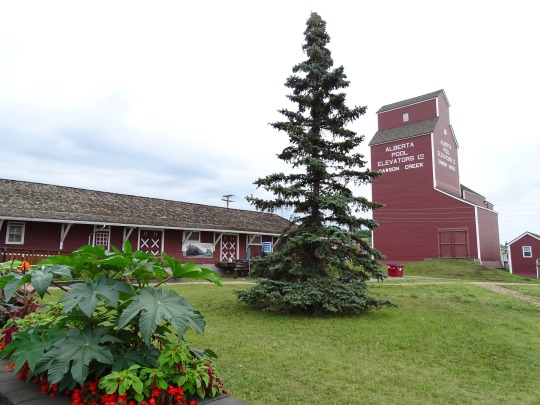
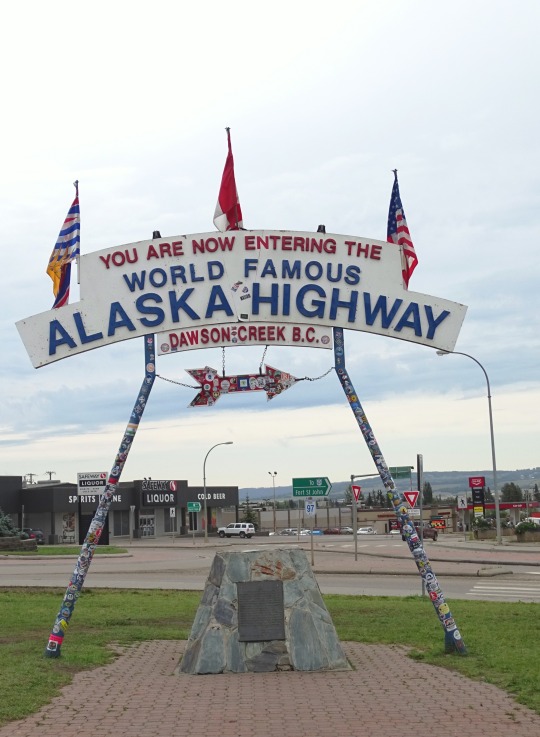
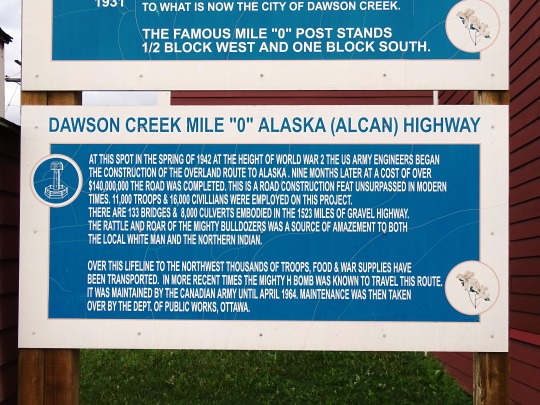

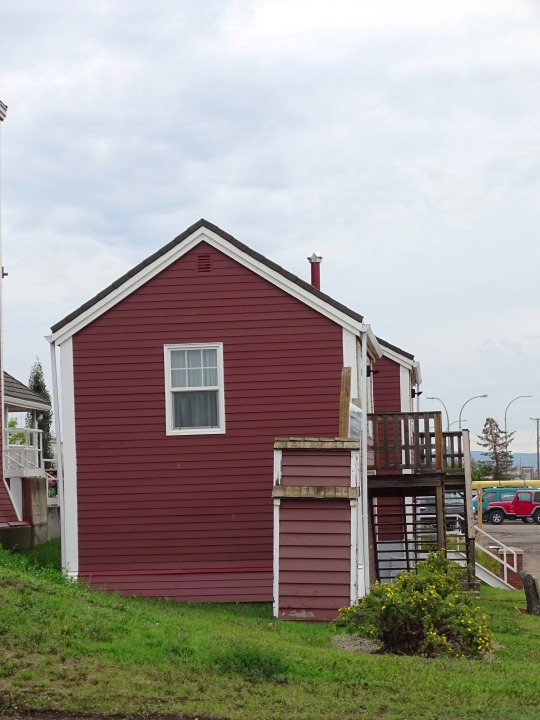

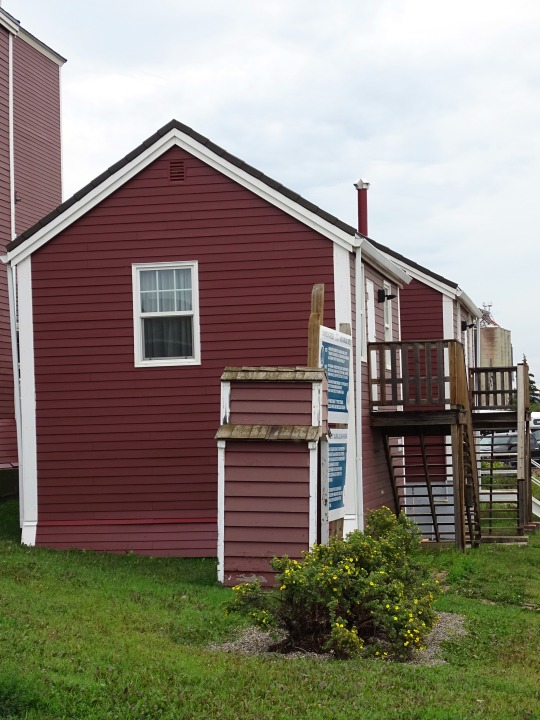
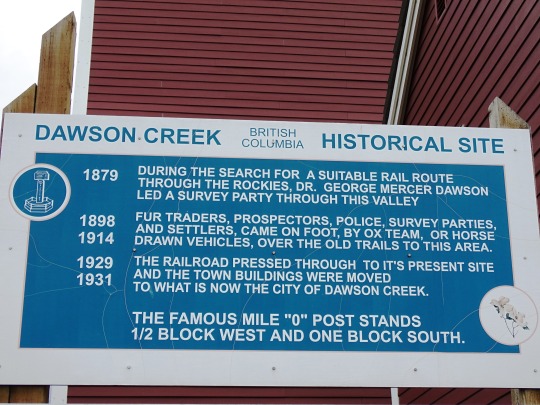

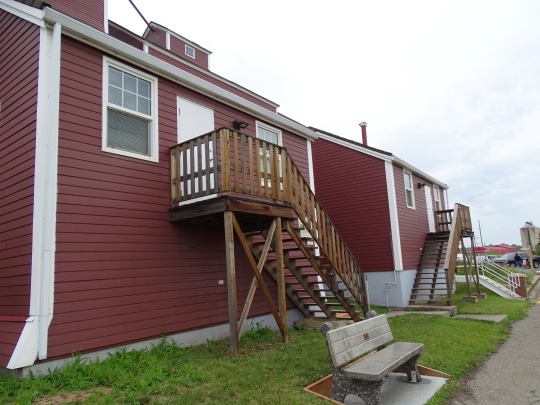
Dawson Creek, BC (No. 3)
Upon entering the war, the United States decided to build a transportation corridor to connect the US mainland to Alaska. In 1942, thousands of US Army personnel, engineers, and contractors poured into the city – the terminal of rail transport – to construct the Alaska Highway. The highway was completed in less than a year; even after the workers involved in its construction departed, population and economic growth continued. In February 1943, a major fire and explosion in a livery barn, packed with road-building supplies including dynamite, caused serious damage to the center of town; five people were killed and 150 injured. Dawson Creek became a RCAF station during WWII, in September 1944. The station disbanded in March 1946.
By 1951, Dawson Creek had more than 3,500 residents. In 1952, the John Hart Highway linked the town to the rest of the British Columbia Interior and Lower Mainland through the Rocky Mountains; a new southbound route, known locally as Tupper Highway, made the town a crossroads with neighbouring Alberta. The next year, western Canada's largest propane gas plant was built and federal government offices were established in town. In 1958, the extension of the Pacific Great Eastern Railway to the Peace from Prince George was completed, and the village was re-incorporated as a city. Between 1951 and 1961, the population of Dawson Creek more than tripled. The RCAF center reemerged on October 1, 1956 and was declared functional in 1958. It was disbanded a final time in March 1964.
Growth slowed in the 1960s, with the population reaching its all-time high in 1966, but area population increased. In the 1970s, the provincial government moved its regional offices from Pouce Coupe to the city, Northern Lights College opened a Dawson Creek campus, and the Dawson Creek Mall was constructed. Several modern grain elevators were built, and the town's five wooden grain elevators, nicknamed "Elevator Row", were taken out of service. Only one of the historic elevators remains, converted to an art gallery. Since the 1970s, with the nearby town of Fort St. John attracting much of the area's industrial development and Grande Prairie becoming a commercial hub, the town's population and economy have not significantly increased.
Since 1992, the city has undergone several boundary expansions. One expansion incorporated undeveloped land in the southeast for an industrial park and a Louisiana-Pacific Canada veneer factory. The city extended sewer and water lines to the location; however, the area was not developed and with the factory only half-built, L-P Canada abandoned its plans. A business making manufactured homes bought the factory and completed its development in 2005. Another expansion incorporated the existing oriented strand board factory in the northwest corner of the city, while further incorporations have included undeveloped land to the south and north.
Source: Wikipedia
#Dawson Creek Art Gallery#prairie elevator#Dawson Creek#NAR Station Museum#Visitor Centre#travel#original photography#vacation#tourist attraction#landmark#cityscape#architecture#British Columbia#summer 2023#Canada#Alaska Highway#NAR Park#Alcan Highway#downtown#northeastern British Columbia#BC#Alaska-Canadian Highway#street scene#Northern Alberta Railway Park#flora#flower#tree#log cabin#Mile Zero Post
4 notes
·
View notes
Text
Commercial Kitchen Gas Range Maintenance and Services in Delhi
A commercial kitchen gas range is a stove top with multiple burners that are used in a professional kitchen. They come in both natural gas and propane versions and have a variety of BTUs that can accommodate different size pots and pans. Some ranges also have ovens, which can be either gas or electric.
2 notes
·
View notes
Text
Why Choosing a Propane Pool Heater is the Best Decision for Your Pool
Installing pool heaters is important because they help keep the water in the pool warm throughout the year, particularly during winter. With a number of options available, propane pool heaters are becoming the standard due to their efficiency in performance and quick heating at an affordable rate.

Propane Pool Heater Installation Near Me
If you have searched for "propane pool heater installation near me," you probably are on the right track of investing in something really worthwhile for your pool. We consider below some of the key reasons why a propane pool heater can be one of the best decisions, how it will serve you for comfort and wallet ease in return.
Fast and Efficient Heating.
One benefit that propane pool heaters have over the rest in terms of speed is water heating. Whereas electric heaters normally take a few hours or even overnight to warm up your pool, propane heaters increase the temperature of the water in a very short period and hence you can always swim warmly any moment. They work properly for any pool that is used either on short notice or very infrequently. Besides, if you have a propane heater in your pool, you won't need to wait all day to plunge into the warm water on cold days.
Energy Efficiency and Cost-Effectiveness
Other goodness with propane heaters is that they are energy-efficient. It is possible to have such a unit convert as high as 95% of the fuel to heat, thereby being one of the efficient ways to go for pool heating. Such efficiency will translate into lower consumptions of fuel, and consequently, operational costs.
Generally speaking, if you were to compare the costs of energy, especially for areas where propane is much more accessible, propane would likely be much cheaper coming from electricity or natural gas. This efficiency could very well equate to savings that are significant over time in your energy bills.
Therefore, "propane pool heater installation near me" such a search is an excellent way to help you save money over time. Although the initial cost of installation can seem highly daunting, it usually pays for itself back rather quickly when you come to realize the reductions in cost each and every month.
Environmental Benefits
Another advantage of a propane pool heater is its environmental benefit. Propane is a clean-burning fuel, meaning it produces fewer greenhouse gas emissions compared to other fossil fuels such as coal or natural gas. Using propane translates to an easy way of heating your pool in an eco-friendly manner. In addition, propane heaters can be used with solar pool heaters for αυ ).
END.
Reliability and Durability
Propane heaters are also very reliable and last quite a long time. Since they are manufactured to work efficiently in varied weather conditions, from the driest to the coldest of climates, if one did their routine maintenance well, a propane heater would last well for many years with not too many problems. Of course, like any other device or equipment, regular maintenance would be required to keep it well.
That is where a dependable service for pool equipment repair becomes beneficial. Pros can do regular inspections and maintenance so as to not only prolong this investment in your propane heater but also prevent any very costly breakdowns. In case you experience any problems in your heaters, such as heat malfunctioning, improper heating, or strange noises, then it is time you called a professional repair service company right away.

Pool Equipment Repair Service
Finding the Right Installation and Repair Services
Installation of a propane pool heater is better left to the professionals, while there is a level of risk if the installation is done wrongly. In your search for "propane pool heater installation near me," make sure to hire an esteemed company with experience in pool equipment installation and repairs. A good installer will not only install your heater correctly but also extend upkeep and repair services in the long run. Whether one plans to take advantage of an in-ground pool in dead winter or even to expand that swimming time in which he spends, a propane pool heater is a very valuable investment. Fast heating, energy efficiency, and high reliability-these are just a few reasons why it maintains a position within the top selection among the pool owners. Just make sure your heater is installed by a professional and schedule regular maintenance through a trusted pool equipment repair service, and you'll be able to run it without problems for many summers to come.
#pool equipment programming miami#propane tank installation for swimming pool#pool equipment repair Miami#pool equipment installation Miami#automatic pool cleaners Miami#residential pool equipment repair miami#color led pool lights Miami#gas line installation for pool heater#commercial gas line installation#pool automation equipment Miami#energy efficient pool pump Miami#pool pump repair in Miami#gas line for a pool heater#gas line for swimming pool heater#pool and spa automation system Miami#pool equipment repair service Miami#pool lighting installation Miami#pool equipment maintenance Miami#commercial gas pipe installation#propane line above ground#propane pipe above ground#propane pool heater installation#Swimming Pool Desalination#residential pool equipment for sale#affordable pool equipment in Miami#pool and spa equipment repair Miami#commercial gas pipe installers near me#propane for pool heater#pool and Spa Lighting Service Miami#pool maintenance service miami
0 notes
Note
So to digress a bit (gas stove anon), I despise how they want EVERYTHING to rely on electricity and not offer any alternatives or even improve on alternatives, and I’m saying this as a younger millennial. I love technology and using electronics, but if for reasons I lose power or don’t have access readily to use electricity, I still want to be able to survive with a gas stove or car, and I absolutely abhor the complete disregard for anything not-electricity. Like, come on people.
I swear there's a point here.
This was a few weeks back, and it only popped up once that I can remember it shortly after I'd noticed that they were doing a full court press on natural gas, but I keep youtube music going on a old tablet that can barely run it and one of the commercials was for this group.




Bummed that I didn't know about National Propane Day, I'll get it this year tho.

To answer the question burning a hole in everyone reading this here and finding out that the Propane Council of Texas is a real thing.
No I have not seen a single image of Hank Hill, which is a bummer. I'm sure some of the folks that work it have a framed pic in their office tho, can't waste a quality setup like that.
To the point.
It's not just Texas, nationally there appears to be a pretty good sized number of advocacy groups out there for propane/LNG
And just because the internet loves a conspiracy theory,

Please don't equate me making the joke to believing it's true

16 notes
·
View notes
Text
“Light weights.” That was the reply when Diplo posted a video of himself, Chris Rock, and several others escaping this year’s Burning Man after heavy rains left thousands of other Burners stranded and unable to leave. It was a small thing, but also encapsulated a growing divide between long-term attendees and those who show up expecting a weeklong Coachella in the Nevada desert.
“Old-timers like myself tend to relish in the chaos,” says Eddie Codel, the San Francisco–based videographer who called Diplo and Rock lightweights on X, the social network formerly known as Twitter. “It allows us to lean into the principle of radical self-reliance a bit more.” Codel is on his 15th burn, he’s been coming since 1997, and Diplo wasn’t the only escaping Burner he called out. When someone else posted a video of RVs stuck in waterlogged sand, he posted, “They were warned.”
’Twas ever thus. Burning Man may have started as a gathering of San Francisco counterculture types, but in recent years it has morphed into a confab of tech bros, celebs, and influencers—many of whom fly in and spend the event’s crushingly hot days in RVs or air-conditioned tents, powered by generators. The Playa, as it’s known, is still orchestrated by the Burning Man Organization, otherwise known as “the Org,” and its core principles—gifting, self-reliance, decommodification (no commercial sponsorships)—remain in place.
But increasingly the Burning Man tenet of “leave no trace” has found itself butting heads with growing piles of debris scattered in the desert following the bacchanal, which can draw more than 70,000 people every year. It’s an ideological minefield, one laid atop a 4-square-mile half-circle of tents and Dune-inspired art installations where everyone has a carbon footprint that’s two-thirds of a ton.
A lot of this came to a head before rain turned Black Rock Desert into a freshly spun clay bowl. Last week, as festivalgoers were driving into Black Rock City, activists from groups like Rave Revolution, Extinction Rebellion, and Scientist Rebellion tried to halt their entry, demanding that the event cease allowing private jets, single-use plastics, and unlimited generator and propane use. They were met by attendees who said they could “go fuck themselves,” and ultimately the protest was shut down by the Pyramid Lake Paiute tribal police. (The route to the event passes through Pyramid Lake Paiute Reservation.)
Last Sunday, as news began to spread about the Burners trapped by the rain, reactions grew more pointed. In one popular TikTok, since deleted, Alex Pearlman, who posts using the handle @pearlmania500, lambasted Burners for contributing to climate change while “building a temporary city in the middle of nowhere while we’re in the middle of an unhoused fucking homeless problem.” Reached by email, Pearlman said that TikTok took down the video, claiming it was mass reported for content violations. The creator challenged that, and it got reinstated—then it was removed again. “My reaction was, ‘I guess the community guideline enforcement manager hitched a ride with Diplo and Chris Rock out of Burning Man,’” Pearlman says.
This sort of thing—a rant, about tech industry types at Burning Man, posted on a social media site, then shared on other social media sites—is essentially the rub, the irony of Burning Man in 2023. For years, the event was, and is, the playground of tech utopian types, the place where they got to unplug and get enlightened. Larry Page and Sergey Brin chose Eric Schmidt as Google’s CEO in part because of his Burner cred. But as mobile data on the Playa has gotten better—in 2016, new cell towers connected the desert like never before—more real-time information has come out of Burning Man as it’s happening, for better or worse.
This year, that led to more than a little misinformation, says Matthew Reyes, who has, since 2013, volunteered to run Burning Man’s official live webcast. He didn’t go to the event this year but has been helping from his home near Dayton, Ohio. He says he’s had to file several Digital Millennium Copyright Act takedown notices to try to get fake Burning Man streams removed. It’s part of a larger trend of misinformation coming out of the festival, like the debunked rumor that there was an Ebola outbreak at the festival this year—one spread by blue-check X users. The tools so often used by attendees to share their adventures are now also the tools making the event look like a quagmire.
“All of social media, it’s all about money, about serving custom ads or whatever the monetization scheme is,” Reyes says, adding that he believes internet discourse has hyped up what happened at this year’s event and that oftentimes things that are jokes on the Playa may get misunderstood on platforms. Reyes argues that many media outlets are further distorting the view of what’s happening on the Playa by reporting on what they see rise to the top of those very same social media platforms.
For Reyes, what happened at this year’s Burning Man is actually proof that, for the most part, the festival’s tenets worked. People shared resources; they got out. And, as Codel put it, he had “the time of [his] life.” Climate change, and Burning Man’s potential impacts on it, are part of a crisis happening worldwide—though, as University of Pennsylvania environmental science professor Michael Mann told WIRED this week, “what took place at Burning Man speaks profoundly to the message of the climate protesters who were shouted down by Burning Man only days earlier.” (Burning Man aims to be carbon-negative by 2030, but some speculate the event won’t hit that target.)
But even if the tenets of Burning Man worked, that doesn’t mean they were always followed—like, say, that decommodification one. Over the Labor Day weekend, when Burning Man attendees were stuck in the muck and unsure when they’d get out, a TikTokker posting on the handle @burningmanfashion told followers that her crew was safe and they had “enough tuna for a week.” The camp’s structures had fallen down, but they’d be OK. “The news is saying it’s pretty bad out here—it is,” she said. “Thank goodness we have a ModVan, so we’re safe inside of that. Sorry about the plug, I know we’re not supposed to talk about commercial things.”
4 notes
·
View notes
Photo


I don’t know what to make of this property in Yucca, Arizona. Built in 1980, it has 3bd. 2ba. and is listed for $325K.

Approaching the front door, you first notice that it’s boarded up.

This is labeled the entry way, but it looks like a bathroom sink.

And, you can see the front door there w/the light coming thru. What is this place? Talk about your open concept. It’s listed as a single family home, but it appears to be some sort of bunker.

Is this place in the middle, the living room? Dance floor? The owners took the heat stove and left nothing but a crooked pipe.

It’s labeled as the living room. Notice the built-in bench. Is that a bear on the pole on the right?


I guess that this pool table conveys.


Look at the huge dining table. Looks like it’s a built-in b/c the base is brick.

The kitchen is very spread out with several brick islands.

Looks like a commercial grade stove.

Wow, look at how far the double sink is.

Knotty pine walls with double fridges.

Bedroom?

They left a cabinet that looks like they blew a hole in it.


This is the labyrinthian bathroom.

Looks like some sort of store room or maybe a TV room?

Hello, this is the 2nd bath.


Long dirt road.

Propane tanks and heating units.


Evaporative Cooling, Evaporative/Swamp- don’t know what that means.


Plus a garage with space for 10 cars.
https://www.movoto.com/yucca-az/13650-s-cocopah-dr-yucca-az-86438/pid_f8e51x2d8g/
83 notes
·
View notes
Text

Health Goods & Ice Wholesaler: Hattori Ice
Location: Shimoda, Shizuoka Prefecture, Japan Timestamp: 16:43 on June 6, 2023
The primary focus of the store is the production of ice, which is crucial for preserving the freshness of the morning's catch on seagoing fishing vessels. The catch is sorted into containers and loaded with fresh ice before being shipped by truck to auction houses, distribution centers, and eventually reaching restaurants and supermarkets.
The store front has a nostalgic charm reminiscent of dagashiya (駄菓子屋/mom-and-pop candy stores in residential neighborhoods), where school children gather on their way home from school to buy cheap snacks while chatting with each other and the elderly owner, often an elderly lady, who runs the shop from the front of her house.
The shop also sells a variety of drinks, including ice cream, as well as some unique beverages such as milk protein drink (雪印カルパワー), Q’sai kale juice (キューサイ青汁), a nutritional drink made from freshwater algae (保健食品クロレラミンCVE), and even offers propane delivery (灯油) for home heating.
During the ‘80s and ‘90s, Q'sai kale juice (Kyusai aojiru) gained immense popularity in the Japanese market, largely due to a memorable TV commercial. The ad prominently featured Nobuo Yana, a renowned film actor and former baseball player, who portrayed the role of a yakuza member (often known for playing villainous characters in movies). Yana's catchphrase, "まずい!もう一杯" (Horrible! I'll have another one), became synonymous with the product. This TV commercial evokes nostalgic memories from my younger years and the Showa Era.
For source material, further reading, and geotagged locations, please visit the Pix4Japan blog. You'll find the link in the Bio section.
Fujifilm X100V (23 mm) with 5% diffusion filter ISO 2000 for 1/250 sec. at ƒ/2.0 Classic Negative film simulation
#ice factory#mom-and-pop shop#Shimoda#Shizuoka Prefecture#Japan#pix4japan#street photography#Fujifilm#X100V#氷卸売市場#服部アイス#下田市#静岡県#ストリートスナップ
6 notes
·
View notes